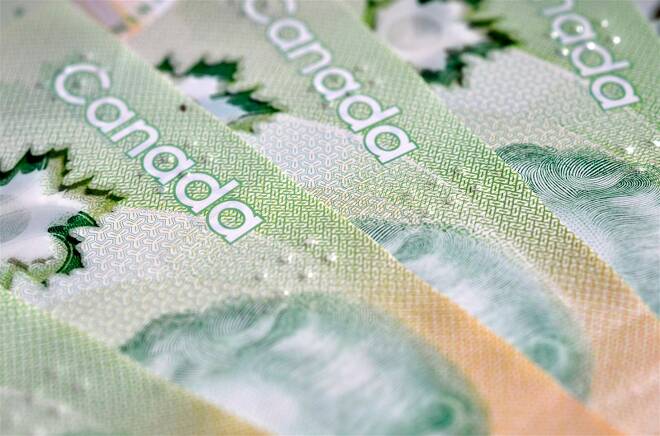This article was written by AMarkets
Advertisement
Advertisement
Things to Consider When Trading the Canadian Dollar
Updated: Mar 4, 2019, 13:21 GMT+00:00
Intro
The Canadian Dollar (CAD) is an important currency part of the Forex dashboard. As part of the DXY (Dollar Index), where it holds almost a ten percent
The Canadian Dollar (CAD) is an important currency part of the Forex dashboard. As part of the DXY (Dollar Index), where it holds almost a ten percent stake, the CAD reflects the strengths and weaknesses of the Canadian economy.
Speaking of Canada, the country stands for a symbol of capitalism and freedom. Part of NAFTA (North America Free Trade Agreement), Canada has a performant economic model many countries only dream about.
The CAD pairs in Forex trading are favorite among retail traders. The leading one, apparently, is the USDCAD pair, as it considers the CAD against the world’s reserve currency, the U.S. Dollar.
The funny thing is that the two countries share a common border, so the two economies are interconnected in more ways that many traders believe.
In trading, when buying or selling a currency pair, traders analyze the two economies corresponding to the currencies that make up the pair. In this case, the United States and the Canadian economy.
Because the United States economy is the largest in the world, and the USD is the world’s reserve currency, the economic data out of the United States dominates the economic calendar.
As for the CAD and CAD pairs, here’s the most important economic data to consider:
- Bank of Canada interest rate decisions and press conferences
- Bank of Canada (BOC) meets every six weeks, on a Wednesday, to set the rate on the Canadian Dollar. Traders oversee the decision as the press conference that follows offers more details that influence the value of the Canadian Dollar
- the higher the interest rate, the better for the currency
- Unemployment Rate and the Employment Change numbers
- The jobs data is typically released at the same time with the NFP (Non-Farm Payrolls) in the United States – first Friday of every month. However, sometimes a one week delay may exist between the two.
- Positive data is good for the CAD
- When released at the same time with the NFP, the USDCAD pair is difficult to trade due to bi-directional flows
- CPI or Inflation
- The Consumer Price Index or inflation is part of the BOC mandate
- Higher inflation leads to higher interest rate, so it’s bullish for the currency
- Lower inflation triggers lower CAD
- Ivey PMI
- In Canada, there’s only one PMI (Purchasing Managers Index) release, unlike in other countries
- Values higher than 50 are positive for the CAD
- Lower values than 50 signal contraction for the Candian economy
- Oil prices and U.S. oil inventories
- Canada is an energy-driven economy as it is a big oil producer. Hence, the price of oil has a big impact on the GDP (Gross Domestic Product).
- Lower oil prices trigger lower CAD
- Higher oil prices lead to strong CAD
- S. oil inventories cause fluctuations in the CAD pairs because most of the Canadian oil exports go to the United States
- Lower U.S. inventories trigger a bullish CAD reaction
- Higher U.S. inventories trigger a bearish CAD reaction
Conclusion
As a leading currency in Forex trading, the Canadian Dollar is part of essential currency pairs. It fluctuates freely, hence it is a source of potential successful speculation. Understanding what drives its moves is critical for Forex traders.
About the Author
Advertisement
